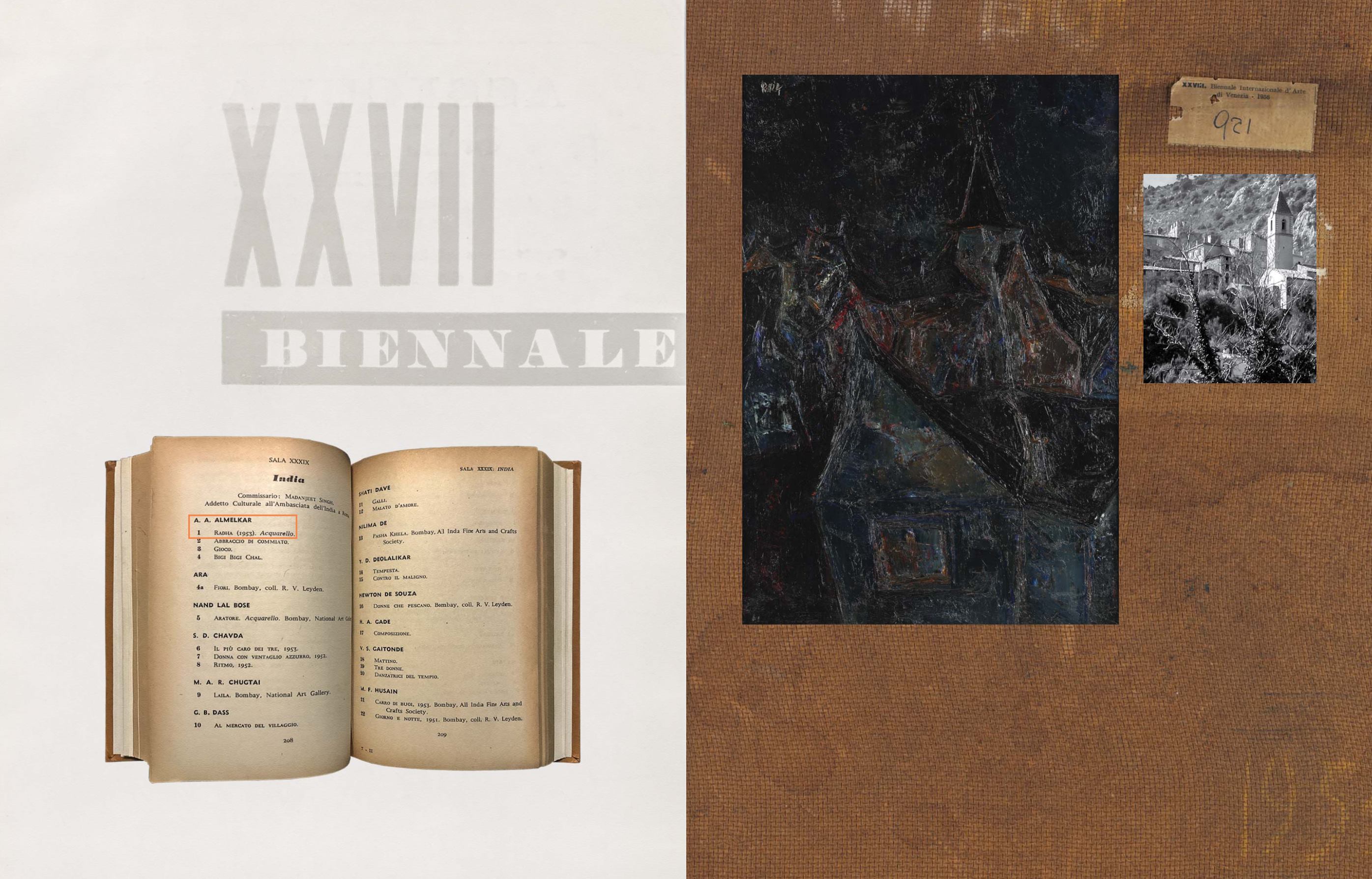

84
85
View of Gorbio in Alpes‒Maritimes, France,
where Raza had a home.
Philippe Rogez, Wikimedia Commons
42
S H RAZA
(1922 ‒ 2016)
Eglise
Signed 'RAZA' (upper left); inscribed and dated 'RAZA 1953'
and bearing a Venice Biennale (1956) label (on the reverse)
1953
Oil on board
22.5 x 15 in (57.2 x 38.1 cm)
Rs 35,00,000 ‒ 45,00,000
$ 55,560 ‒ 71,430
EXHIBITED:
The Arts of France and the World,
Venice: XXVIII Biennale
Internazionale d'Arte di Venezia, 1 June ‒ 1 October 1956
PUBLISHED:
Ashok Vajpeyi ed.,
Understanding Raza: Many Ways of Looking at
a Master
, New Delhi: Vadehra Art Gallery, 2013, p. 276 (illustrated)
"An Insight into the Artists: Strategies of Being,"
Shodhganga
,
p. 258 (illustrated)
Venice Biennale label on verso
INDIAN ART AND THE VENICE BIENNALE
The Venice Biennale is one of the preeminent international art platforms to support and showcase contemporary art
practices around the world. It was founded in 1895 to commemorate the silver anniversary of the accession of King
Umberto I of Italy, and his consort Margherita of Savoy. Initially displaying only Italian artists by invitation, it opened its
doors to international art and established national pavilions in 1907. The first of these was Belgium. In 1954, Indian art
was exhibited at the Venice Biennale for the first time. This was also a time when the Indian art scene had gained some
recognition, following the relative success of the Progressive Artists’ Group in preceding years, and the establishment of the
National Gallery of Modern Art and the Lalit Kala Akademi in the same year.
Spearheaded by Madanjeet Singh, then cultural attaché at the Indian Embassy in Rome, the retrospective displayed 59
paintings by 32 artists, including Jamini Roy, Amrita Sher‒Gil, M F Husain, S H Raza and F N Souza. Singh travelled to
Bombay, Madras and Calcutta, personally collecting works from both private and public collections for this show. The
exhibition sold more than 40 works, an impressive number at a time when Indian artists were relatively unknown in
Europe.
Radha
, painted by A A Almelkar a year prior, was part of this exhibition.
Singh also organised the succeeding exhibition of Indian Art at the Venice Biennale in 1956, focussing mainly on four Indian
artists: M F Husain, Dinkar Kaushik, Akbar Padamsee and S H Raza, whose works had seen a favourable response in Europe
by then. The following lot,
Eglise
by Raza, painted in 1953, was part of this show. Indian art continued to have a presence
at the Venice Biennale until 1982. In 2011, an Indian Pavilion was organised once again, showcasing contemporary artists
Zarina Hashmi, Gigi Scaria and Praneet Soi, Mriganka Madhukaillya and Sonal Jain.
Almelkar's
Radha
listed in the 1954 Venice Biennale exhibition catalogue.
Almelkar was one among 32 artists represented at the first ever Indian Pavilion organised by Madanjeet Singh.


















